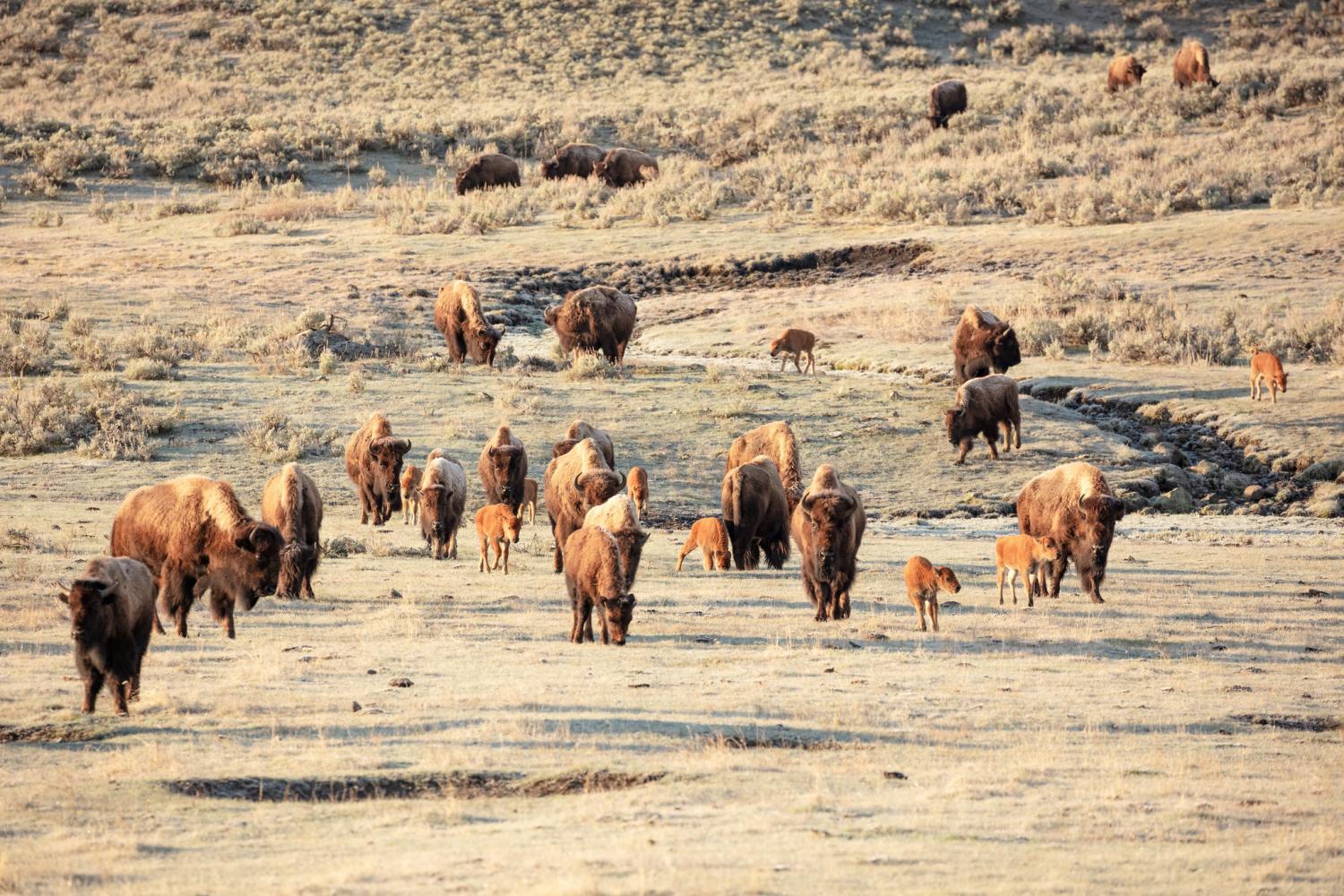
The Buffalo Field Campaign is calling for Yellowstone National Park's affiliated tribes to be co-stewards of the park's bison herds/NPS file, Jacob W. Frank
A group that long has questioned how the National Park Service manages bison at Yellowstone National Park wants to see tribal entities given co-stewardship of the iconic animals along with seeing their numbers rise 10-fold to 50,000 in the Greater Yellowstone Ecosystem.
The proposal by the Buffalo Field Campaign, which has tenatively scheduled a Tribal Summit in November, seeks to replace “the existing failed bison management plan with a historic agreement that appropriately honors the fiduciary responsibility of the United States to Tribes.”
“Tribal cultures and lifeways depend on repairing our sacred relationship with buffalo,” said James Holt, a Nez Perce environmental scientist and executive director of the Buffalo Field Campaign. “And restoring honorable harvest of wild bison is being severely hampered by the limited populations of Yellowstone Bison, together with the onerous conditions placed upon the hunt by Montana’s Department of Livestock.”
J. Dallas Gudgell, an environmental scientist originally from the Fort Peck Reservation, said in a release from the organization that "[W]e’re currently operating under a plan that perpetuates colonialism and oppression by encouraging the Tribes to compete with one another for a severely and artificially limited resource.
“It is in the interest of the tribes and the buffalo for tribes to cooperate with one another instead, based upon their common spiritual and cultural interests” Gudgell continued, “and to work together with the buffalo to expand the Yellowstone population from 5,000 to 50,000 by restoring their natural migrations into the Greater Yellowstone Ecosystem, which is largely national forest lands, rather than cutting those migrations off with canned hunts, as Montana currently does in the sole interest of culling the herd.”
Yellowstone's free-roaming bison descended from pocket herds that escaped the great slaughter of the late 19th century as they were secreted away in the upper headwaters of the Yellowstone River deep in the park's interior. Some, including the Buffalo Field Campaign, believe the park's herd needs protection under the Endangered Species Act from a range of threats, such as disease, habitat loss, climate change and accidental introgression of cattle genes.
The Biden administration has made a $25 million commitment for a variety of projects and initiatives to bolster bison numbers. They range from establishing new bison herds and supporting bison transfers to tribes to improving the quality of grassland ecosystems, restoring native plant communities, and supporting prescribed fire efforts.
The Buffalo Field Campaign believes "the time has now come for Yellowstone’s treaty tribes to assert their inherent, un-ceded rights in relation to America’s free-roaming wild buffalo."
“We have never surrendered our aboriginal rights to co-exist on unoccupied lands with our buffalo brothers and sisters,” Holt said in the group's release. “And unlike the state of Montana, tribes are willing and able to help take care of the buffalo, just as my tribe has done for salmon, using the best science and our own traditional ecological knowledge.”


